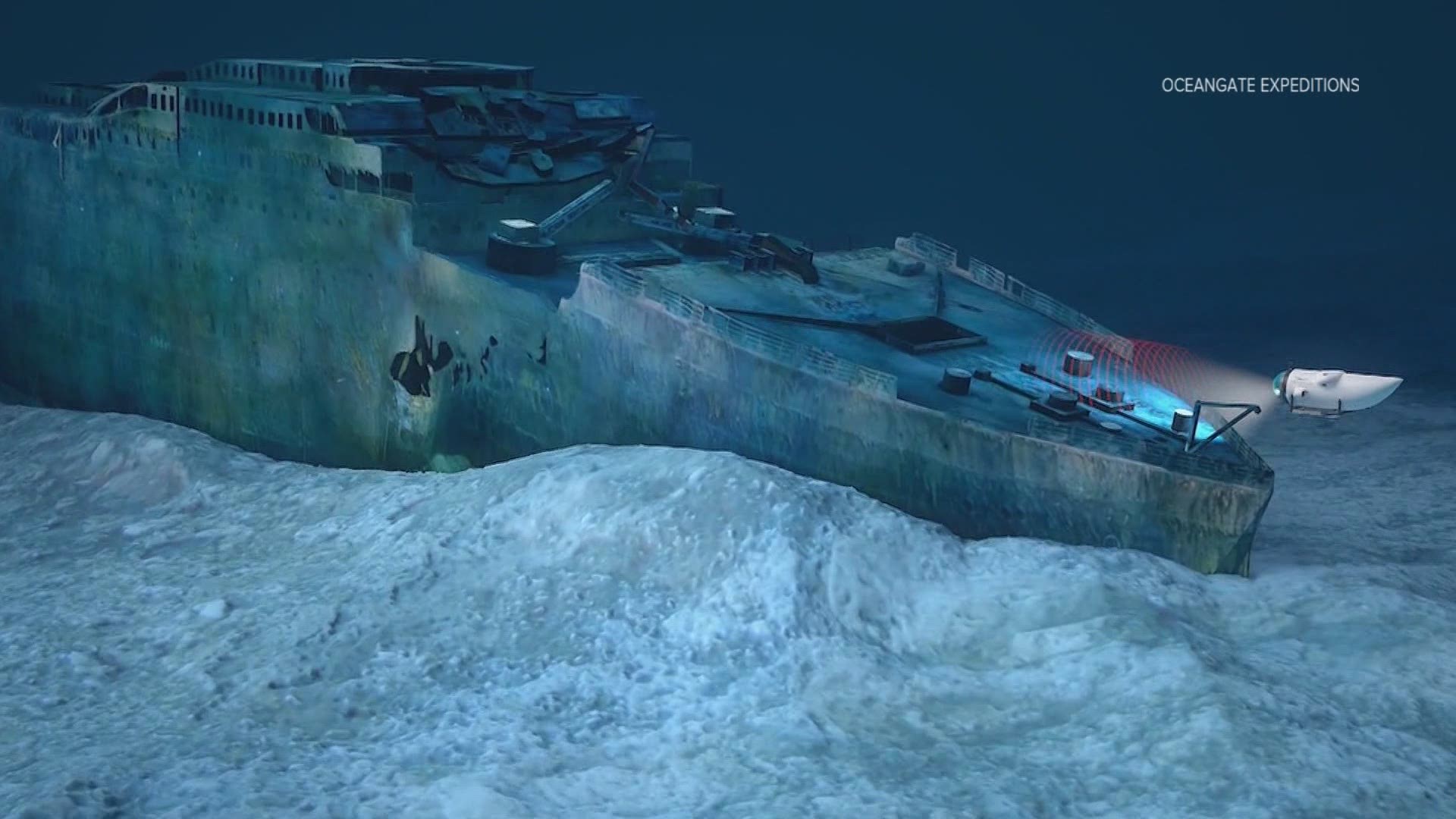EVERETT, Wash. — A former aerospace engineer from Everett and a team of specialists will make history this week as they descend to the ocean floor on an expedition to document the world's most famous shipwreck, the Titanic, which sank in the Atlantic ocean in 1912.
"It's going to be a dynamic process," said Stockton Rush, who said growing up he always wanted to blast off into space, but now finds himself exploring new worlds under the sea.
"We look at the ocean as being, really, the final frontier," he said. "I mean that is where people are going to go. Most of the life on this planet is in the ocean. There are hundreds of thousands of species that are yet to be discovered."
Rush is the CEO of OceanGate, which owns and operates submersibles. Unlike a submarine, a submersible requires a support ship located on the surface of the water.
In 2018, KING 5 profiled Rush's company and its relationship with Washington State University's electrical engineering program in Everett. At that time, recent graduates helped Rush bring his sub Titan to life and prepare it for the world stage.
But a lightning storm wiped out the electronics that year. In 2019, there were problems with the support ship, and then the coronavirus pandemic put a stop to last year's attempt.
"It's a much more difficult process than I ever could have imagined," said Rush.
Where some saw setbacks, Rush saw opportunity, and he spent the last year upgrading some components, fine tuning and exploring the depths of Puget Sound.
But now, Rush and his crew are ready to head to the middle of the Atlantic to set up for the first week of dives. The team will go more than 12,000 feet below the surface in the only five-person submersible in the world that can reach that depth.
"Like most of the deep-diving subs, it's been this limited group of extremely wealthy individuals who buy and make their own subs and dive where they want to go. What Oceangate's about is bringing the ability to explore the oceans to everyone," said Rush.
Paying customers, who double as mission specialists, will join scientists and Titanic experts on the expedition to get a view that few have seen with their own eyes. The crewmembers will also have special sonar and laser equipment to create a high-resolution 3D image of the Titanic’s wreckage and capture video.
"We're going to go back every year. And that's going to allow us to have a level of what they call longitudinal data," explained Rush. "That's going to be very valuable to look at decay rates and what kind of micro-organisms and aquatic species will populate what's an artificial reef."
This multi-year project is aimed at capturing the Titanic in more detail than ever before and give the world a better idea of just how long it might be recognizable.
Rush and his team are planning for about 20 missions below the surface this summer, each will be about 10 hours long with about half that time at the Titanic.

